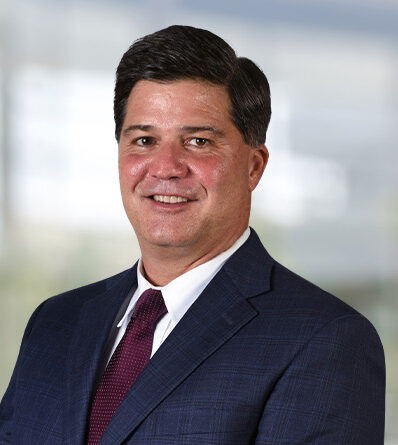Finding IP Value
Patent Appeals Court Raises Bar on Functional Claiming
Rarely has such a short word or phrase influenced patent claims to such a degree as the phrase, “means for.” This phrase sits at the intersection of function (what an invention accomplishes) and structure (the materials for accomplishing it). 35 U.S.C. § 112, para. 6 is the basis for its use in patent claims:
An element in a claim for a combination may be expressed as a means or step for performing a specific function without the recital of structure, material, or acts in support thereof, and such claim shall be construed to cover the corresponding structure, material, or acts described in the specification and equivalents thereof.1
 With this provision, Congress created a balance by permitting patentees the option to claim inventions with functional language, which tends to require fewer words. But in exchange for brevity in the claims, the specification must disclose all structures, materials, or acts that perform the claimed function. To illustrate, suppose a claim recites “means for boiling water.” If the specification discloses the arrangement of heating elements, wires, and other structures, and identifies that they correspond to the act of boiling water, then those elements – and only those and their equivalents – will define the scope of the claim.
With this provision, Congress created a balance by permitting patentees the option to claim inventions with functional language, which tends to require fewer words. But in exchange for brevity in the claims, the specification must disclose all structures, materials, or acts that perform the claimed function. To illustrate, suppose a claim recites “means for boiling water.” If the specification discloses the arrangement of heating elements, wires, and other structures, and identifies that they correspond to the act of boiling water, then those elements – and only those and their equivalents – will define the scope of the claim.
However, this might also open the door to a non-infringement defense. For example, an accused infringer could argue that the structures mentioned above are actually for electric stoves, whereas the accused system boils water with gas heat. Additionally, this type of claiming might open the door to invalidate a claim outright.
This was the result in Williamson v. Citrix Systems, Inc. 2 There, the Federal Circuit Court of Appeals, sitting en banc for the key part of the opinion, invalidated claims in U.S. Patent No. 6,155,840 that recited a “distributed learning control module.” The module’s function involved connecting a presenter’s computer to audience members’ computers via a network. Williamson’s Complaint alleged that Citrix’s GoToMeeting, GoToWebinar, and GoToTraining were among the infringing products.
The Federal Circuit opinion invalidated some of the claims in view of § 112, para. 6, on the basis that the patent specification failed to disclose any structure for a certain function contemplated by the claim. If the patent holder had been able to avoid treatment under § 112, para. 6, these claims would likely have survived. In fact, the patent holder cited earlier Federal Circuit precedent, holding that when the word “means” is absent from the claims, a court should strongly presume that § 112, para. 6 does not apply “without a showing that the limitation essentially is devoid of anything that can be construed as structure.”
However, in a ruling that paved the way to invalidating the subject claims, the en banc court overruled this precedent. It reasoned that the cases cited by the patent holder focused the inquiry too much on the presence or absence of “means for,” and those cases made it too difficult to overcome the presumption. The en banc court also held that the question hinges on whether persons of ordinary skill in the art would understand the words to have a sufficiently definite meaning as the name for structure. Specifically, if the words of a claim do not connote sufficiently definite structure, then the limiting features of § 112, para. 6 apply.
The three-judge panel assigned to the case then characterized the distributed learning control module as a generic term, similar to “mechanism,” “element,” “device,” and other words that are considered verbal constructs tantamount to using the word “means.” Thus, “distributed learning control module” required § 112, para. 6 treatment because, as used in the subject claims, the term did not provide a sufficiently definite meaning for structure.
Having determined that § 112, para. 6 applied, the panel next determined that the subject claims were invalid due to indefiniteness. On this issue, the reasoning focused upon the specification, observing there was not a disclosure of any structures or materials to perform the module’s function of coordinating streaming data from the transmissions between the presenter and the audience members’ computers.
Williamson makes it easier for patent challengers to invoke the stricter requirements of §112, para. 6, and to limit the scope of a claim to “only the structure, materials, or acts described in the specification as corresponding to the claimed function and equivalents thereof.” Further, Williamson could affect many cases because thousands of U.S. patents either recite a module or the act of configuring a module. Interestingly, the patent challengers who argued for more expansive use of § 112, para. 6 own hundreds of such patents. For example, claim 9 of U.S. Patent No. 8,922,617 – owned by Citrix Systems, Inc. – is directed to playback of online meetings and recites both a selection module and a communications module:
- A server computing device for facilitating display, during an ongoing online meeting, of a previously presented portion of the meeting, the server computing device comprising:
computer memory for storing at least a portion of live screen data for a current point in time for an ongoing online meeting … the storing comprising detecting an occurrence of a trigger event … based on a time interval or a change in displayed information …
a transmitter for transmitting to a viewer computing device i) the live screen data for display thereat, and ii) stored screen data …;
a selection module for receiving, from the viewer computing device, a selection, while the meeting is still ongoing, of the earlier point in time and for instructing the transmitter to transmit the stored screen data from the earlier point in time to the viewer computing device for display thereat while the meeting is still ongoing …; and
a communication module for i) facilitating receipt, via the viewer computing device, a request to share the stored screen data from the earlier point in time with the other computing devices in the plurality of viewer computing devices, and ii) transmitting … the stored screen data from the earlier point in time to the other computing devices in the plurality of viewer computing devices for display thereat.3
Accordingly, the result the patent challengers advocated in Williamson – and achieved –opens the door more widely to invoking the limiting features of § 112, para. 6 in connection with their own patents.
Surely, there are also many patents owned by patent assertion entities whose patents are, after Williamson, more readily subject to § 112, para. 6 even without actually using the phrase “means for” in a claim. In all these contexts, Williamson could have a significant impact on the patent infringement landscape, and may cause the written description of the specification to take on greater importance than is already the case.
1 The court opinion used the version of § 112, para. 6 from prior to the effective date of the America Invents Act.
2 2015 WL 3687459 (June 16, 2015).
3 Claim 9 is shortened here for brevity.
